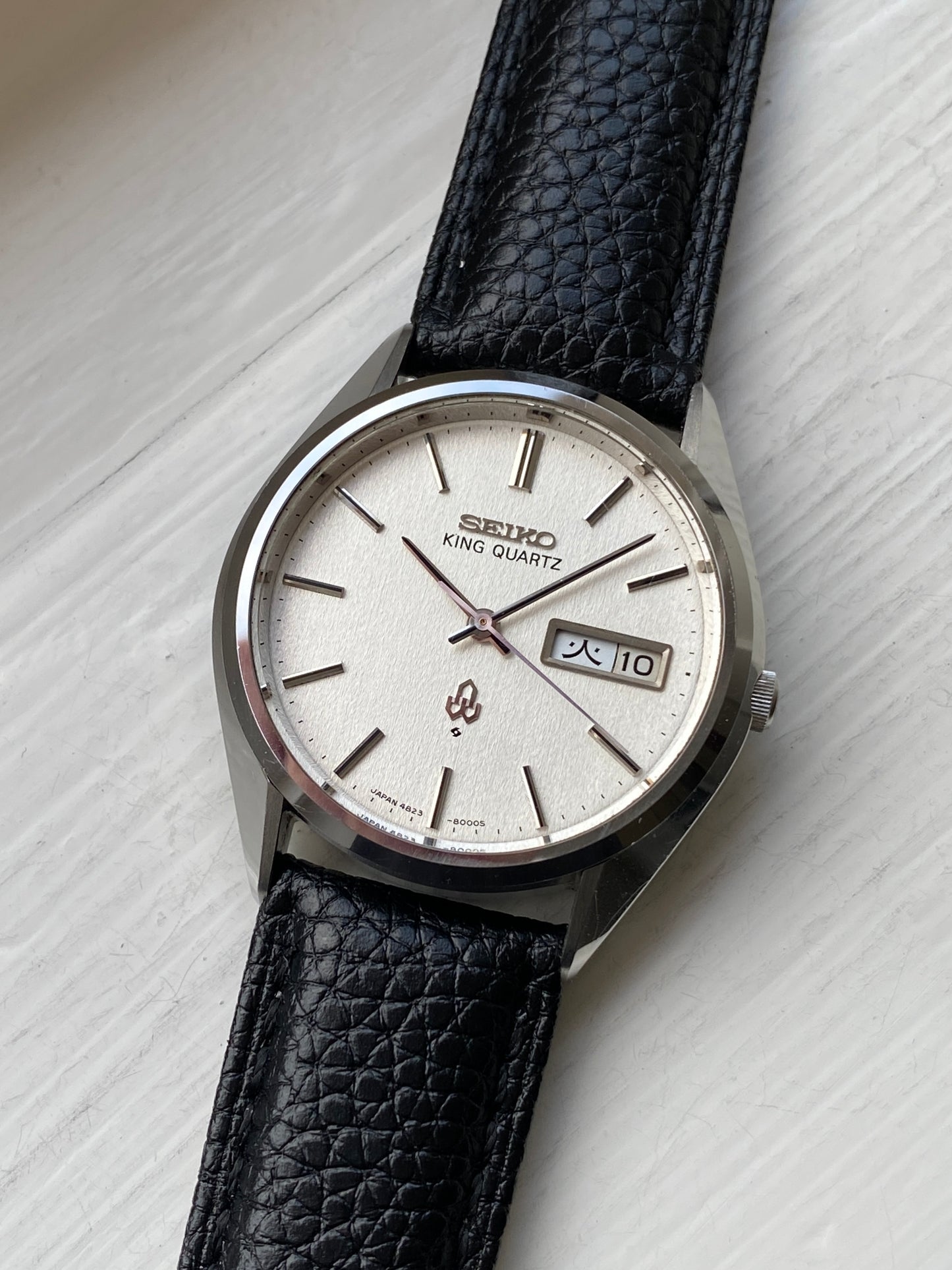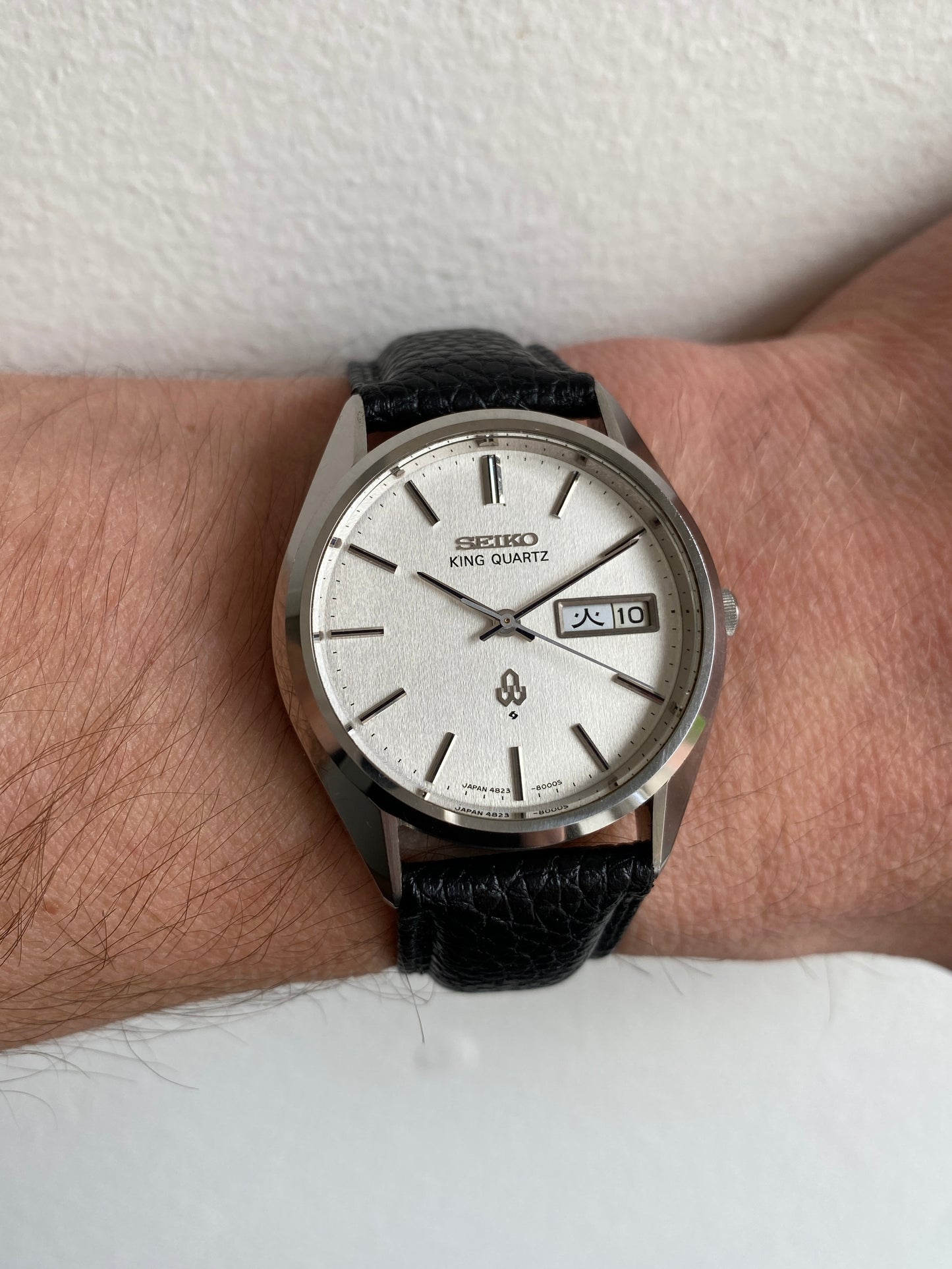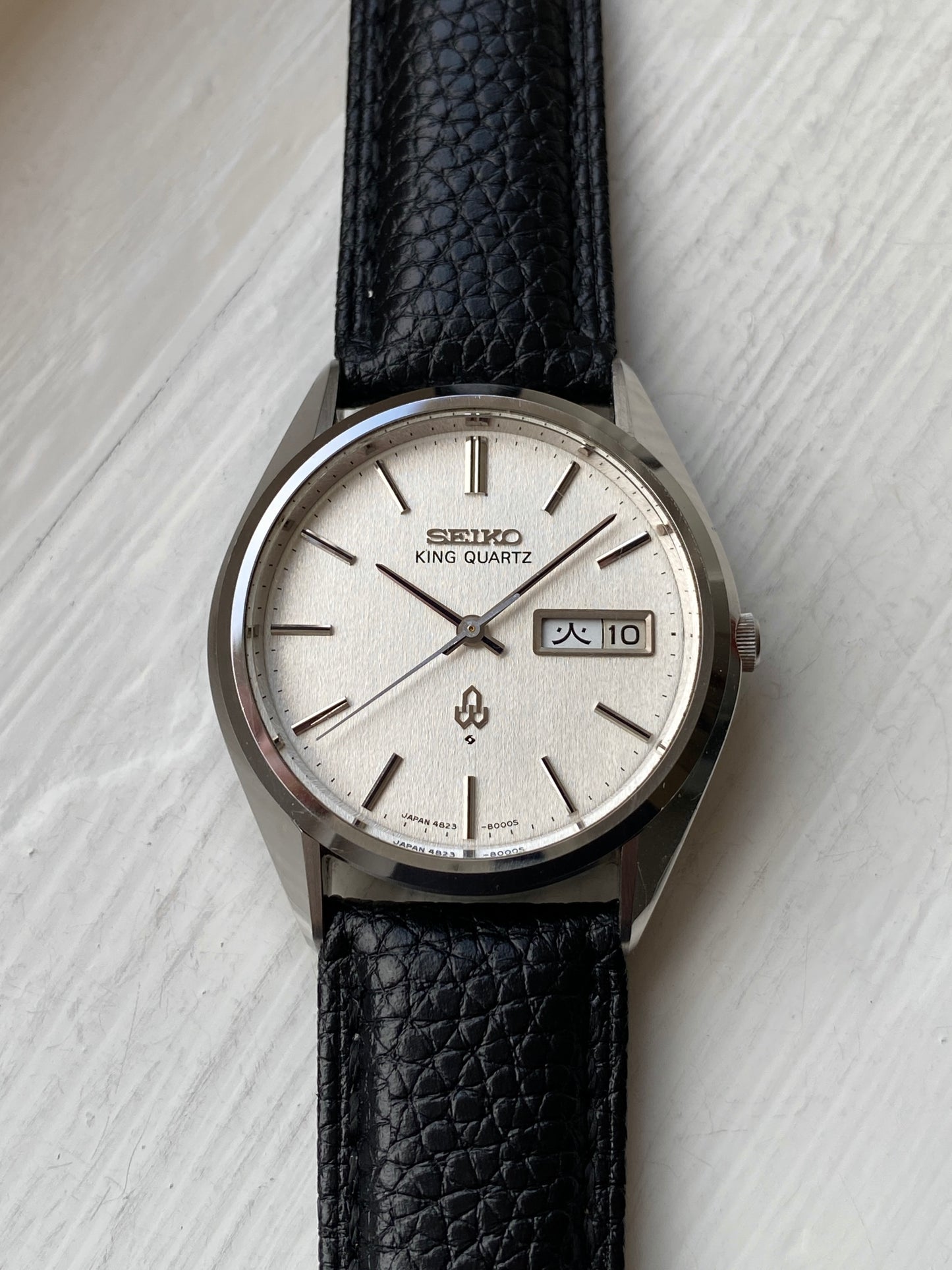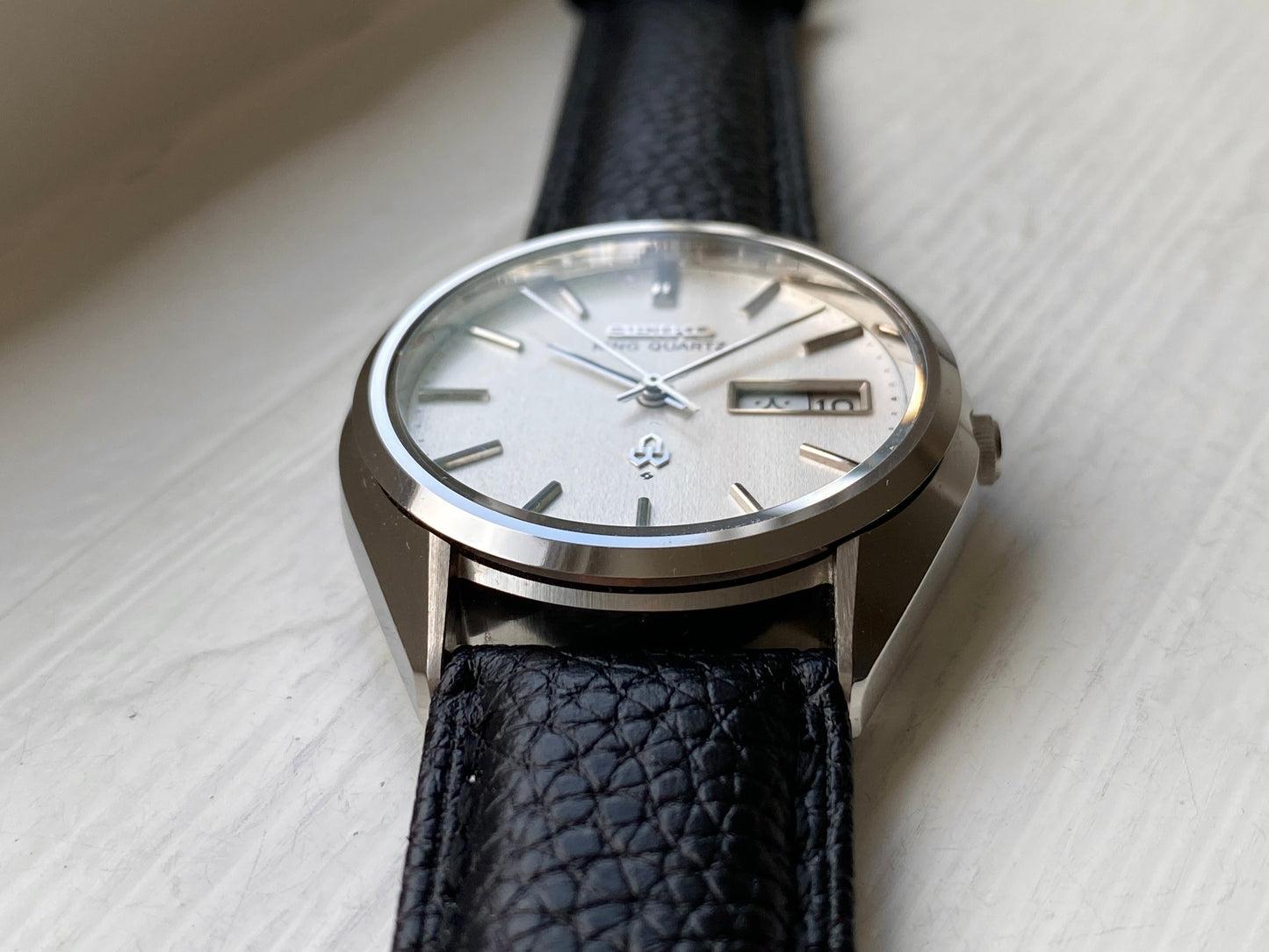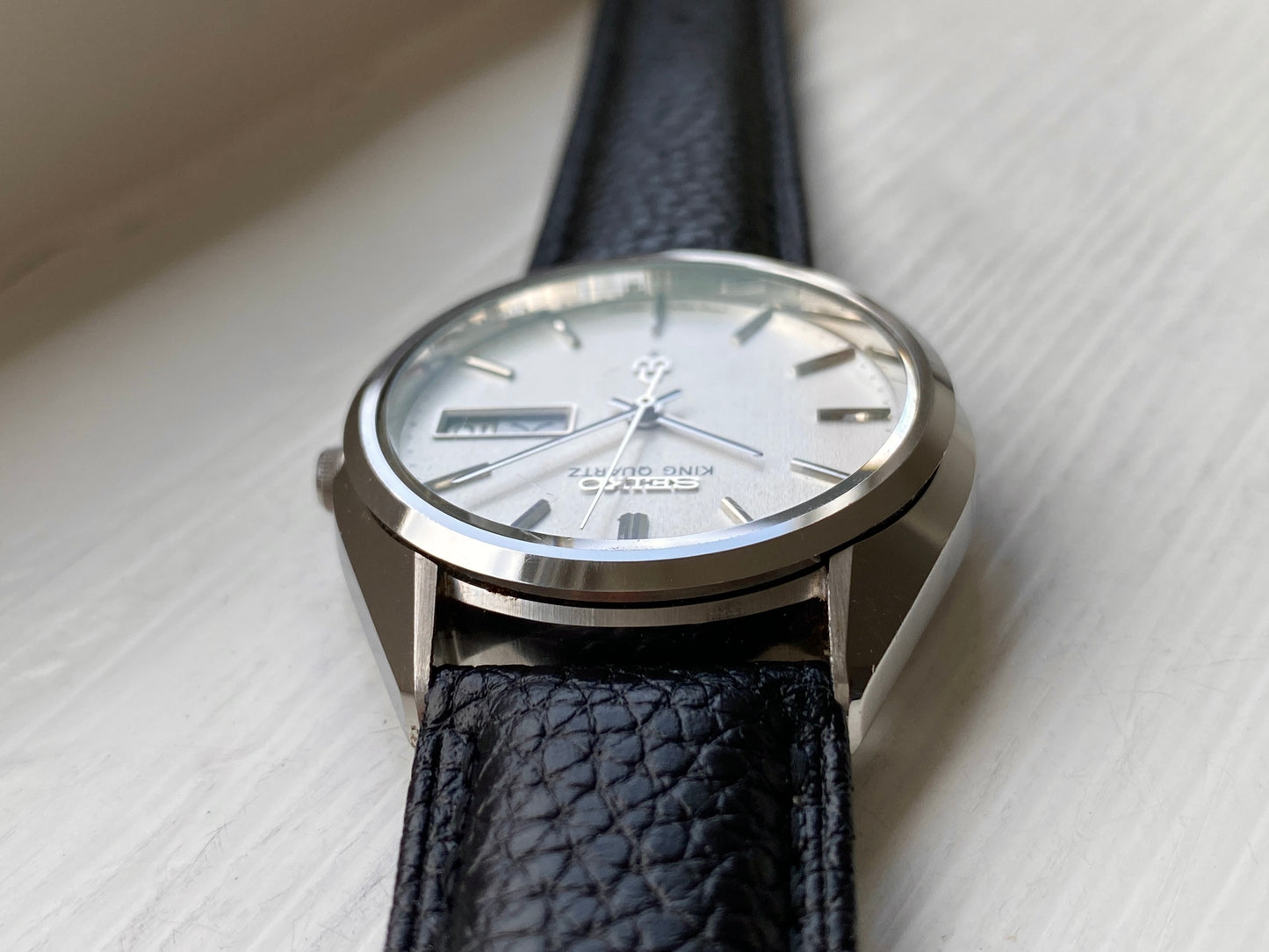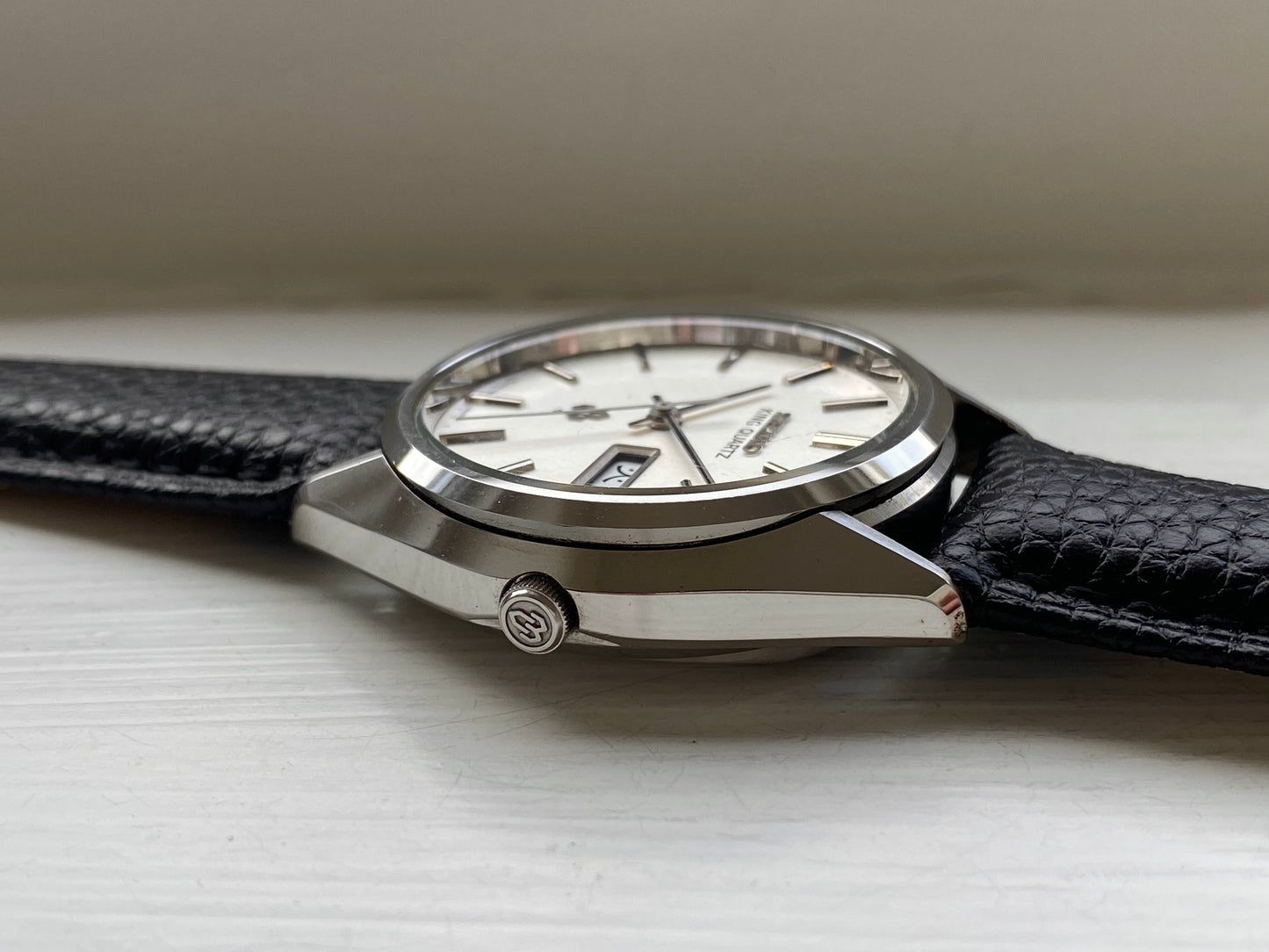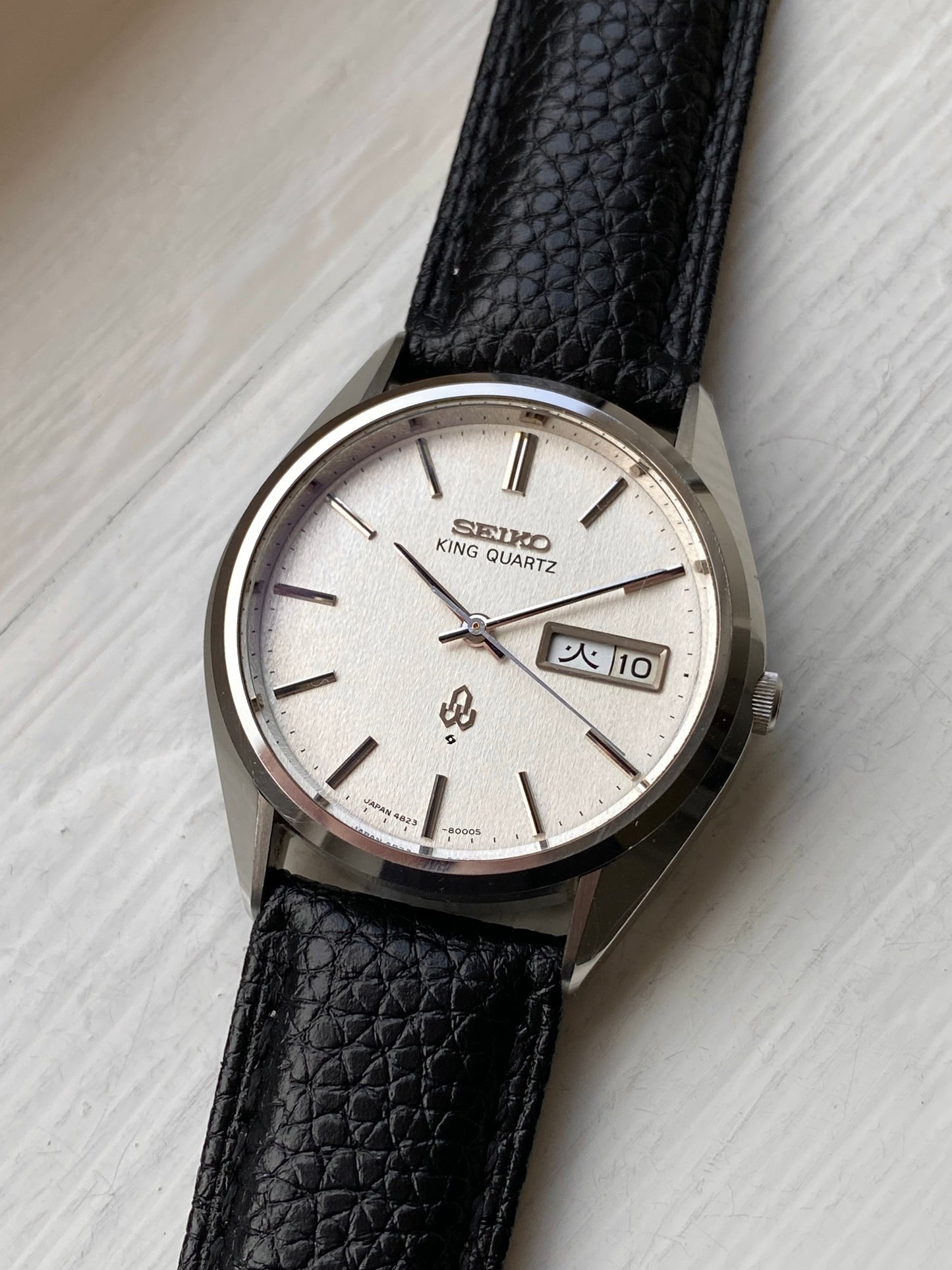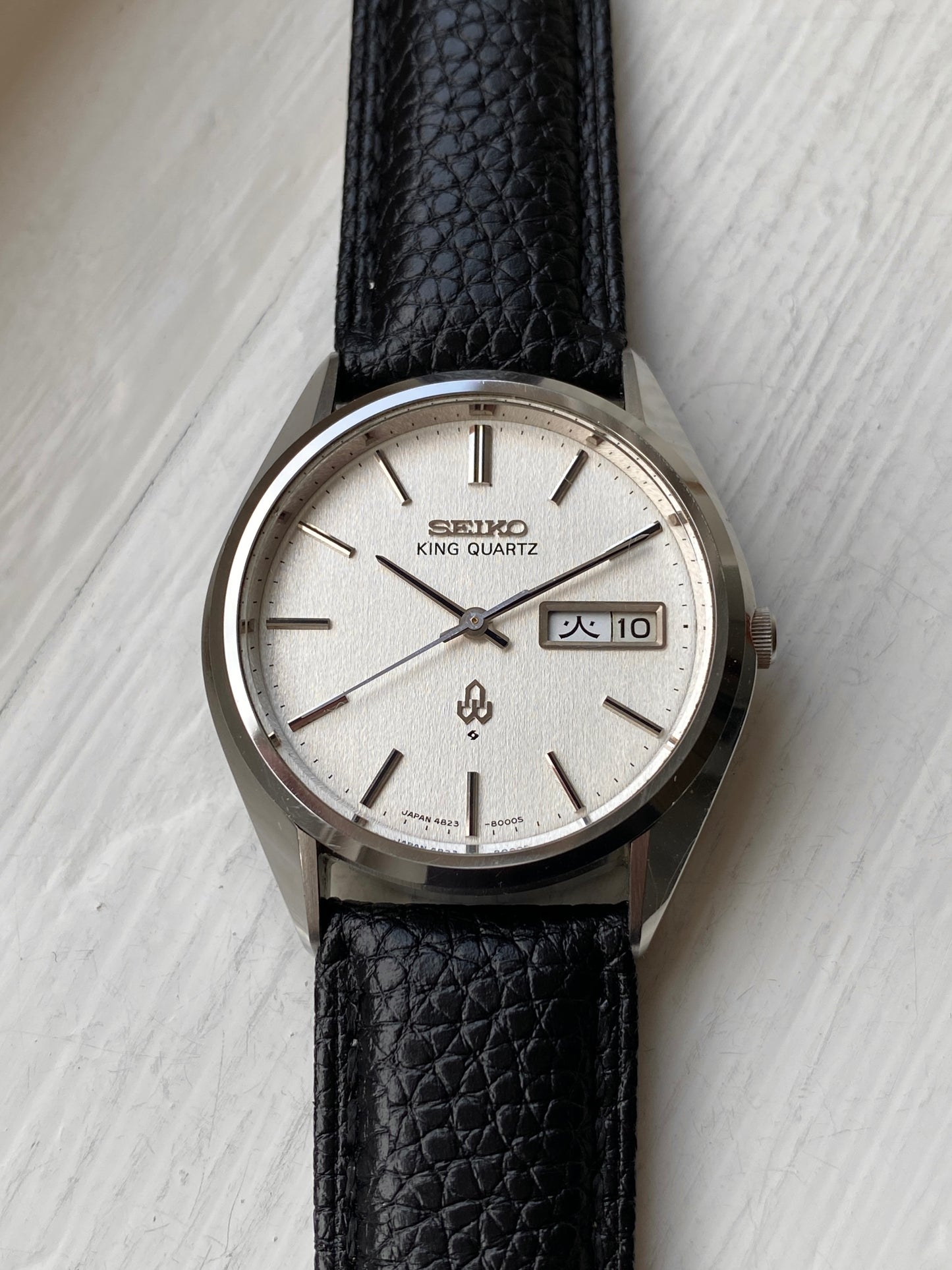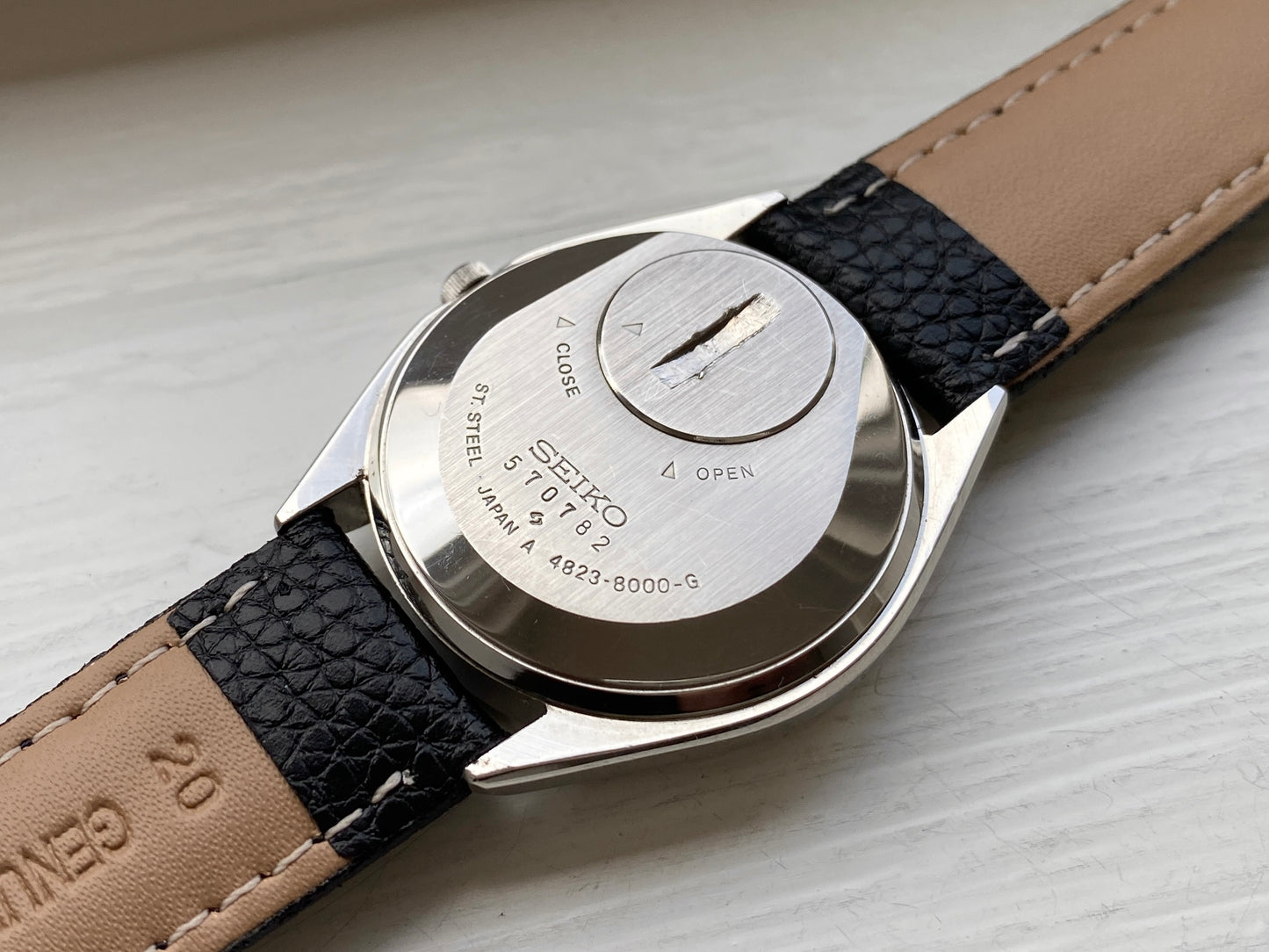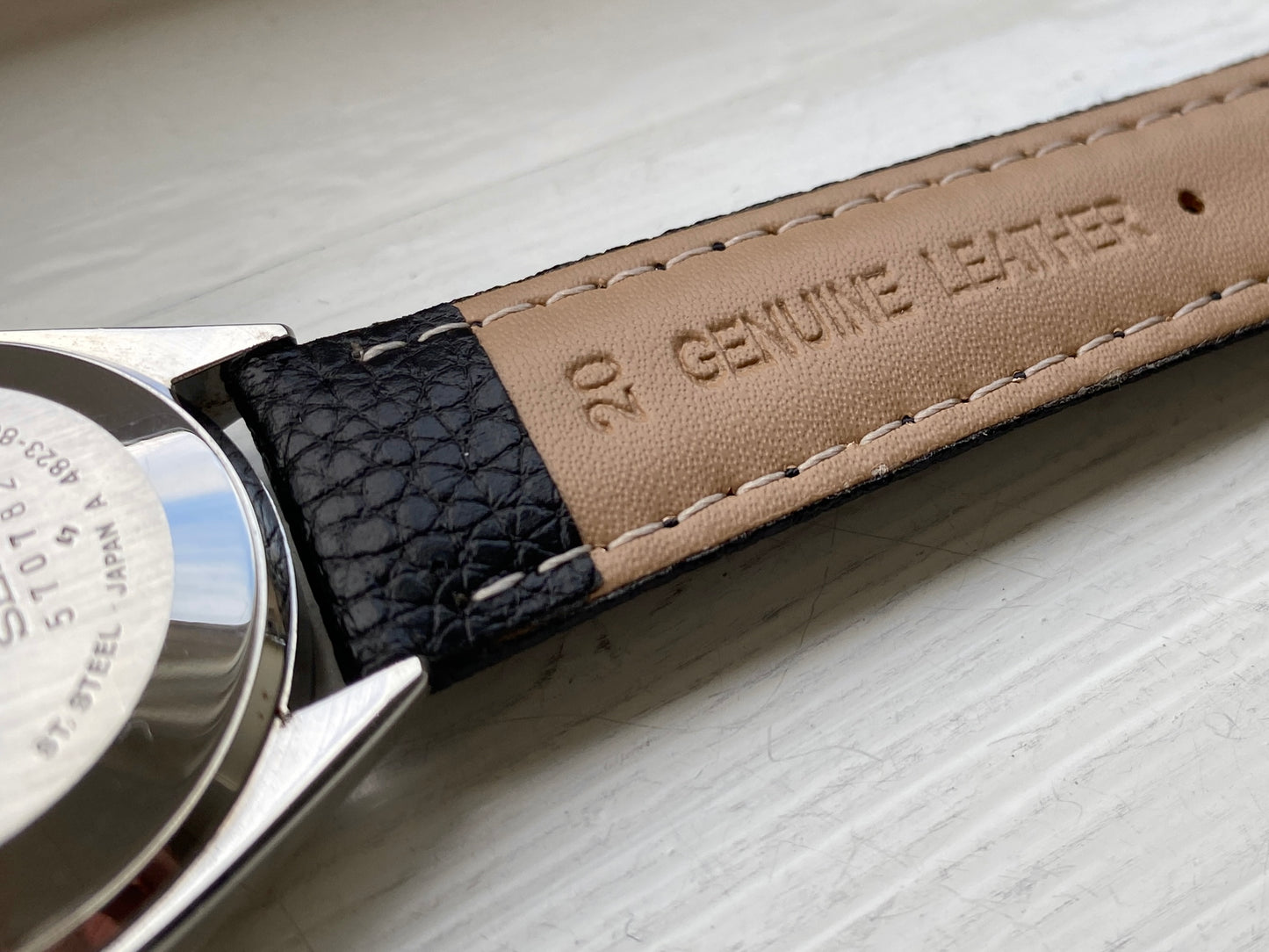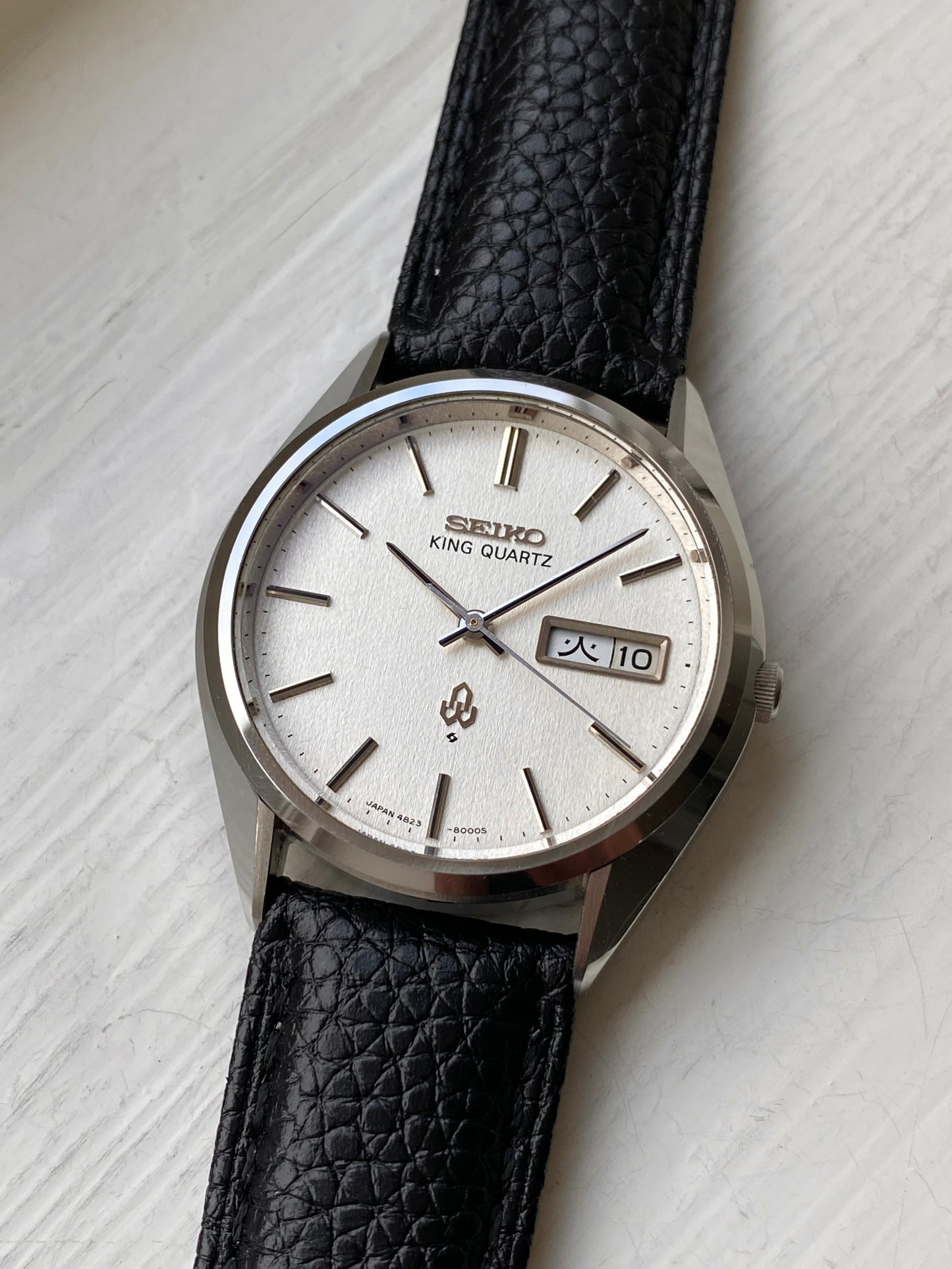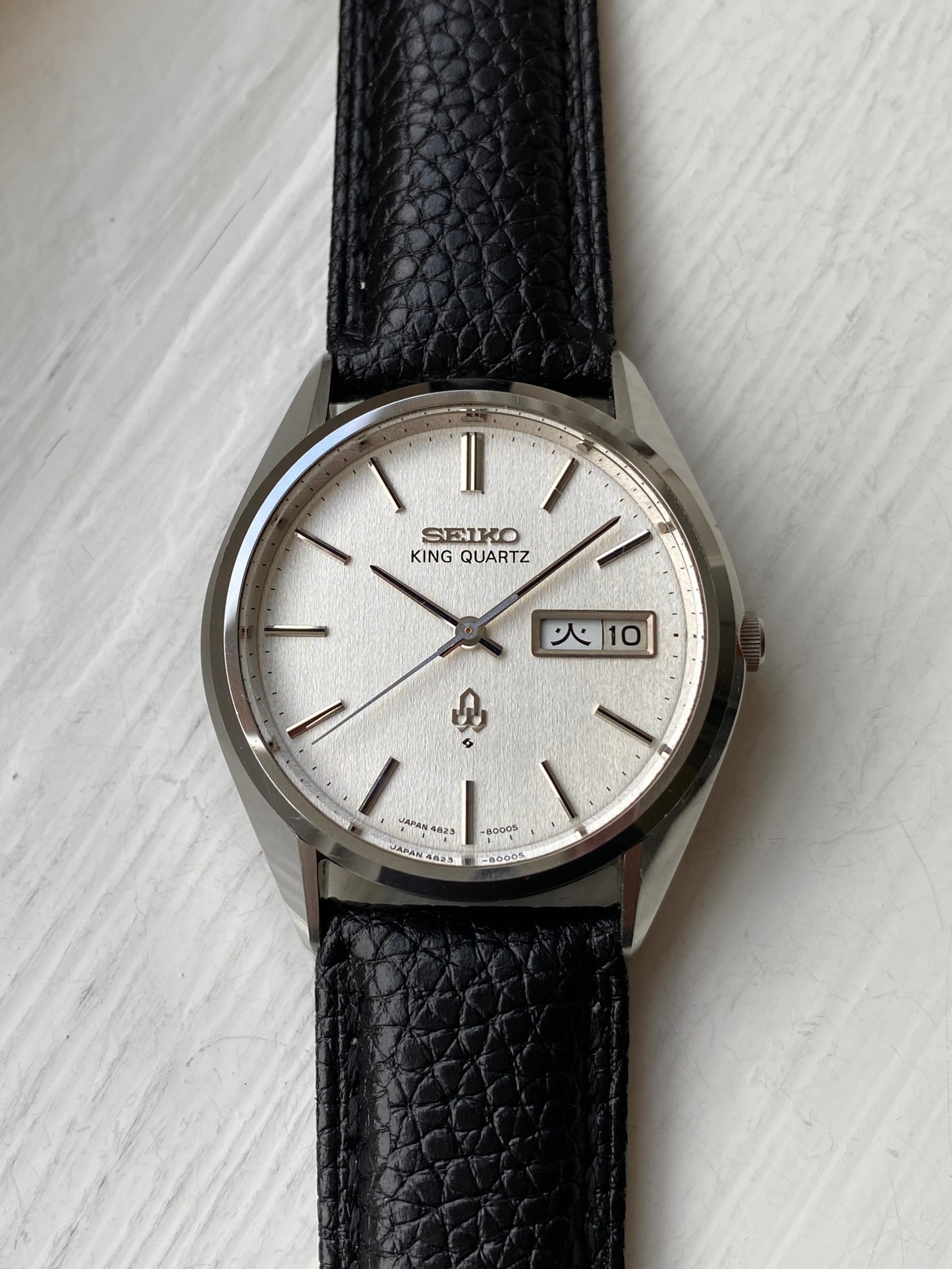Seiko KQ 4823-8000
Seiko KQ 4823-8000
Couldn't load pickup availability
|
Brand |
Seiko |
|
Model |
King Quartz |
|
Reference |
4823-8000 |
|
Year |
1975 - July |
|
Movement |
Quartz |
|
Extras |
New leather strap |
|
Dial |
White washi paper |
|
Jewels |
7 |
|
Case |
37mm |
|
Lugs |
19mm |
|
Day/date |
Day and date |
|
Crystal |
Mineral |
|
Strap |
New leather strap |
|
Performance |
±10 seconds per month |
|
Box/papers |
Not included |
|
Condition |
Excellent |
The watch
It doesn’t much better than this – a sharp case designed under Tanaka’s Grammar of Design rules, and a minimalistic washi dial with applied indices - powered by a high-grade quartz movement from the golden era of Quartz technology.
This King Quartz, produced in 1975, is in excellent unpolished condition. The case is in perfect condition, while the crystal shows only minor, barely noticeable scratches.The dial is in immaculate condition, without any flaws.
The day can be displayed in Japanese Kanji or English. It got a new battery in March 2025 and comes with a fresh leather strap.
Details
The Seiko 4823 is a high-grade quartz movement introduced in the mid-1970s. Unlike Seiko's later twin quartz calibers, the 4823 relies on a single quartz oscillator but was still finely regulated for excellent accuracy, typically around ±10 seconds per month.
This movement features both day and date complications, along with a hacking seconds function for precise time setting. It does not include any automatic hand alignment or snap-to-hour features — time and calendar adjustments are performed manually via the crown.
The 4823 was part of Seiko's effort to bring precision quartz technology to the luxury market, and watches housing this movement often exhibit exceptional case finishing and classic 1970s design aesthetics, like this beautiful King Quartz.
The quartz crisis
The "quartz crisis," also known as the "quartz revolution," refers to a period in the late 20th century when the Swiss watch industry faced significant upheaval due to the rise of quartz technology. This technological shift began in the 1960s and 1970s, primarily driven by Japanese companies like Seiko.
Quartz watches, which use a battery-powered quartz crystal to keep time, offered several advantages over traditional mechanical watches. They were more accurate, less expensive to produce, and required less maintenance. Seiko, a pioneer in quartz technology, introduced the world's first quartz watch, the Astron, in 1969. This innovation demonstrated that quartz watches could offer precision and affordability, challenging the long-standing dominance of Swiss mechanical watches.
The Swiss watch industry, which had long been revered for its craftsmanship and mechanical expertise, struggled to adapt to this new technology. Many Swiss companies initially underestimated the impact of quartz watches and were slow to innovate. As a result, they faced financial difficulties and market share losses. The quartz crisis led to the decline or bankruptcy of several traditional Swiss watchmakers and forced the industry to undergo significant restructuring.
Ultimately, the quartz crisis reshaped the watch industry, leading to a renewed focus on innovation and a blend of traditional and modern technologies. The Swiss watch industry eventually rebounded by incorporating quartz technology alongside their mechanical expertise.
